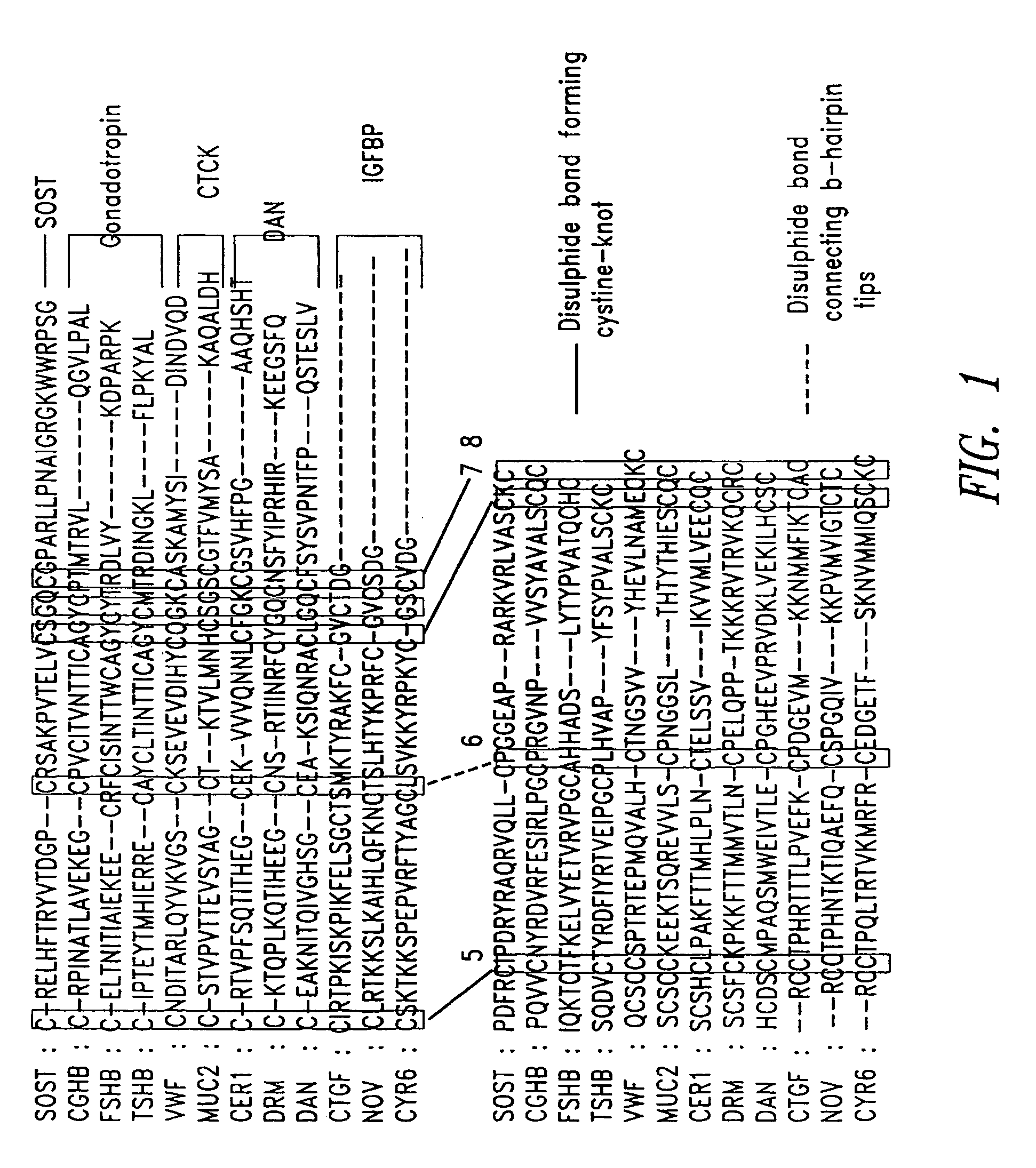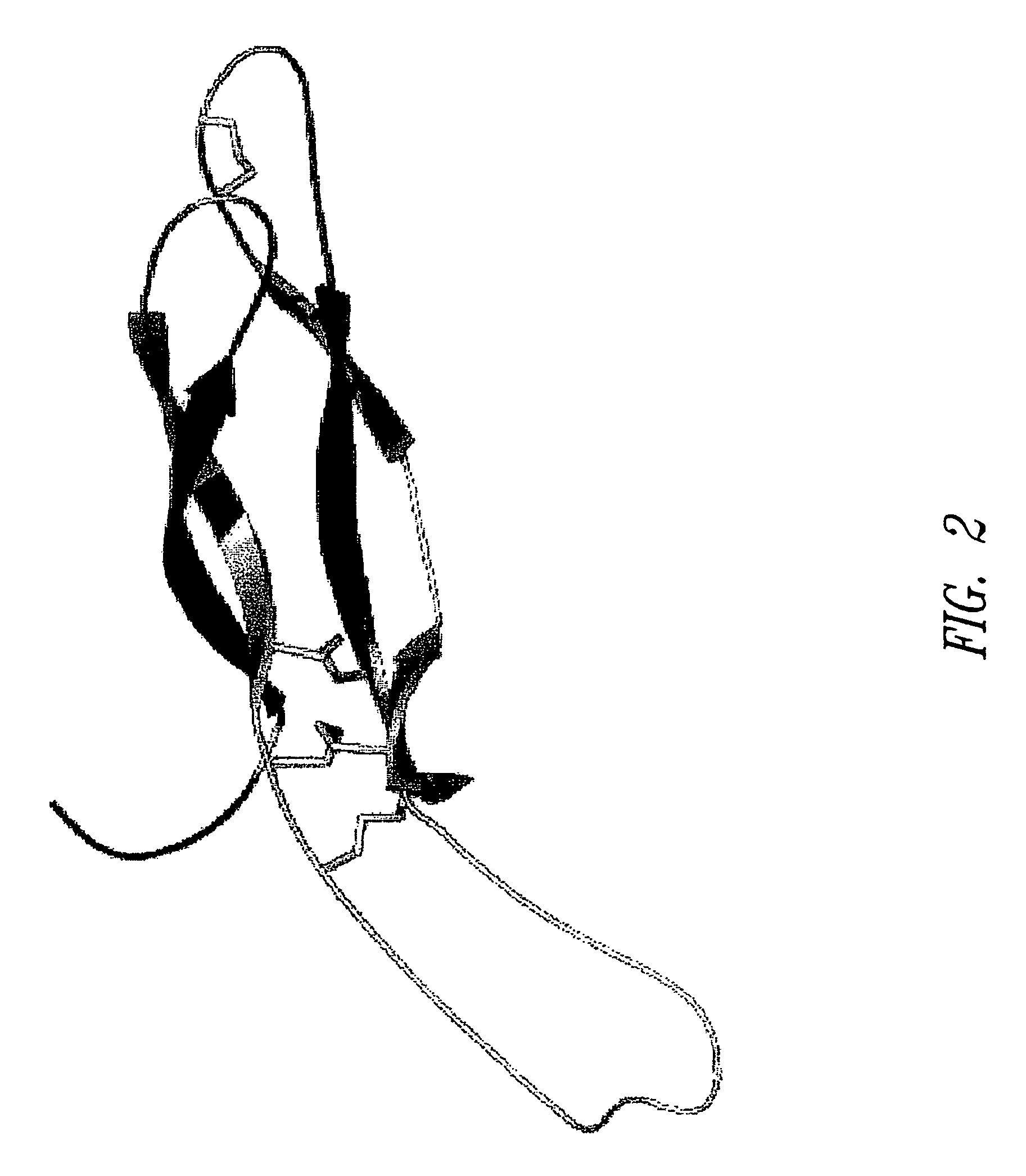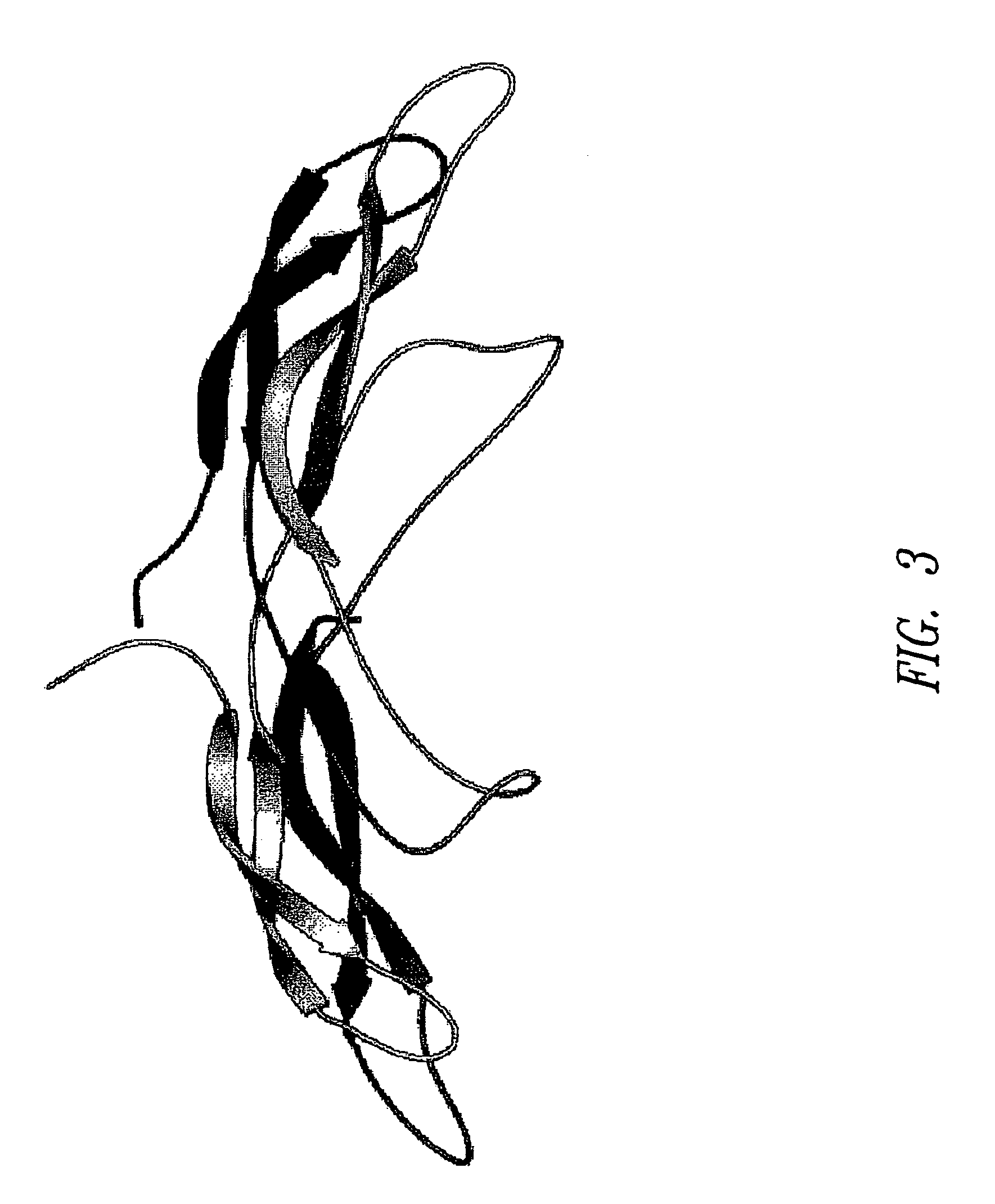Antibodies specific for sclerostin and methods of screening and use therefor
a technology of sclerostin and antibodies, applied in the field of pharmaceutical products and methods, can solve the problems of tens of billions of dollars, significant medical problems, and the most expensive disease of the health care system, osteoporosis
- Summary
- Abstract
- Description
- Claims
- Application Information
AI Technical Summary
Benefits of technology
Problems solved by technology
Method used
Image
Examples
example 1
Modeling of Sclerostin Core Region
[0190]Homology recognition techniques (e.g., PSI-BLAST (Altschul et al., Nucleic Acids Res. 25:3389-402 (1997)), FUGUE (Shi et al., J. Mol. Biol. 310:243-57 (2001)) suggested that the core region of SOST (SOST_Core) adopts a cystine-knot fold. FUGUE is a sensitive method for detecting homology between sequences and structures. Human Chorionic Gonadotropin β (hCG-β), for which an experimentally determined 3D structure is known, was identified by FUGUE (Shi et al., supra) as the closest homologue of SOST_Core. Therefore, hCG-β was used as the structural template to build 3D models for SOST_Core.
[0191]An alignment of SOST_Core and its close homologues is shown in FIG. 1. Among the homologues shown in the alignment, only hCG-β (CGHB) had known 3D structure. The sequence identity between SOST_Core and hCG-β was approximately 25%. Eight CYS residues were conserved throughout the family, emphasizing the overall structural similarity between SOST_Core and h...
example 2
Modeling SOST-BMP Interaction
[0194]This example describes protein modeling of type I and type II receptor binding sites on BMP that are involved with interaction between BMP and SOST.
[0195]Competition studies demonstrated that SOST competed with both type I and type II receptors for binding to BMP. In an ELISA-based competition assay, BMP-6 selectively interacted with the sclerostin-coated surface (300 ng / well) with high affinity (KD=3.4 nM). Increasing amounts of BMP receptor IA (FC fusion construct) competed with sclerostin for binding to BMP-6 (11 nM) (IC50=114 nM). A 10-fold molar excess of the BMP receptor was sufficient to reduce binding of sclerostin to BMP-6 by approximately 50%. This competition was also observed with a BMP receptor II-FC fusion protein (IC50=36 nM) and DAN (IC50=43 nM). Specificity of the assay was shown by lack of competition for binding to BMP-6 between sclerostin and a rActivin R1B-FC fusion protein, a TGF-β receptor family member that did not bind BMP....
example 3
Design and Preparation of SOST Peptide Immunogens
[0200]This Example describes the design of SOST peptide immunogens that are used for immunizing animals and generating antibodies that block interactions between BMP and SOST and prevent dimer formation of SOST monomers.
BMP Binding Fragments
[0201]The overall similarity between SOST and Noggin and the similarity between the N-terminal regions of the two polypeptides suggest that SOST may interact with BMP in a similar manner to Noggin. That is, the N-terminal region of SOST may interact with both the type I and type II receptor binding sites on BMP, and a portion of the core region (amino acid alignment positions 190-220 in FIG. 4) may interact with the type II receptor binding site such that antibodies specific for these SOST regions may block or impair binding of BMP to SOST.
[0202]The amino acid sequences of these SOST polypeptide fragments for rat and human SOST are provided as follows.
[0203]SOST_N_Linker: The N-terminal region (inc...
PUM
| Property | Measurement | Unit |
|---|---|---|
| height | aaaaa | aaaaa |
| dissociation constant KD | aaaaa | aaaaa |
| dissociation constant KD | aaaaa | aaaaa |
Abstract
Description
Claims
Application Information
 Login to View More
Login to View More - R&D
- Intellectual Property
- Life Sciences
- Materials
- Tech Scout
- Unparalleled Data Quality
- Higher Quality Content
- 60% Fewer Hallucinations
Browse by: Latest US Patents, China's latest patents, Technical Efficacy Thesaurus, Application Domain, Technology Topic, Popular Technical Reports.
© 2025 PatSnap. All rights reserved.Legal|Privacy policy|Modern Slavery Act Transparency Statement|Sitemap|About US| Contact US: help@patsnap.com



